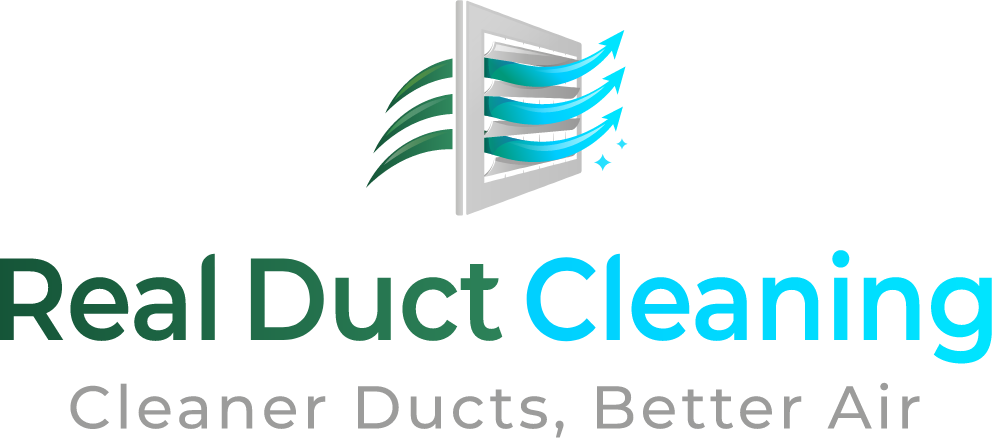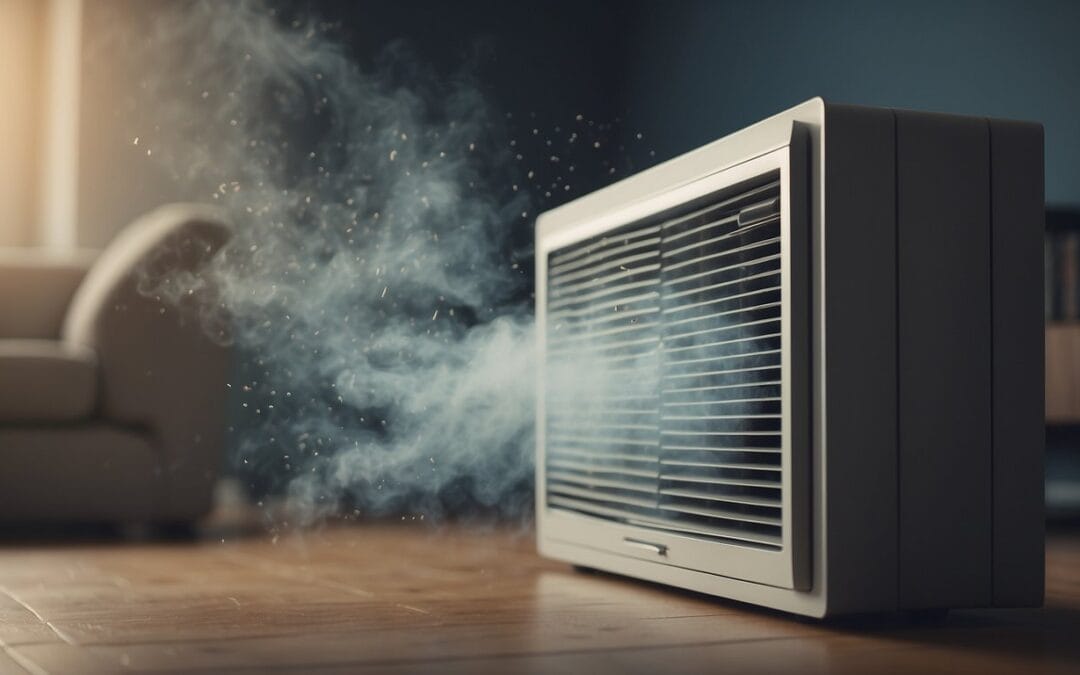These are some of the common signs and symptoms we see and hear about from clients who call us out to fix air ducts and vents that are dirty or dusty.
Maintaining clean air ducts is crucial for the health of your home environment. When your ducts accumulate dust and debris, it can lead to reduced air quality and potentially cause a variety of health issues.
Recognizing the signs of dirty air ducts early on could save you from more significant problems down the line. Air duct cleaning is more than just household cleanliness—it’s about ensuring the air you breathe is as uncontaminated as possible.

Your HVAC system is designed to control the temperature and ensure that air circulates throughout your space effectively. However, when dust and debris clog your air ducts, the system’s efficiency can plummet, leading to unwanted noise, increased energy bills, and a strain on your system’s components. If your energy costs are rising or if your HVAC system is noisier than usual, it might be an indication of obstructed ductwork. These signs signal the need to assess the cleanliness of your air ducts.
The impact of contaminated air ducts isn’t just mechanical; it extends to your well-being too. Symptoms resembling cold, such as a runny nose, sneezing, and throat irritation, can all be telltale signs of dirty ducts. If you find these symptoms are persistent at home but improve when you’re away, it’s possible that your home’s air quality is compromised. In cases of asthma, exposure to dander, pollen, dust, and mold in your ductwork can trigger more frequent attacks, emphasizing the importance of clean air passages.
Recognizing Indoor Air Quality Issues
Evaluating the quality of air within your home is crucial for both your comfort and health. Key indicators of poor indoor air quality arise from your ducts and air vents, which can manifest through visible dust, odd smells, or variable airflow.
Visible Dust Emissions
If you observe a buildup of dust and particles around your air vents, this is a clear sign of dirty or dusty ducts. Dust emissions become apparent when fine particulates are released into the room, often noticeable when sunlight streams through windows or under bright lighting.
Unpleasant Odors
An accumulation of dust and debris in the ducts can lead to musty, stale odors when your HVAC system is in operation. If you detect a persistent smell that doesn’t go away with regular cleaning, it might be originating from your home’s ventilation system.
Inconsistent Airflow Patterns
Examine each room for signs of inconsistent airflow from your vents. You can do this by holding a lightweight object, like a tissue, near the vent while the system is running. Noticeable reduction or variance in airflow can indicate blockages in your ductwork, which affect not only your comfort but also the efficiency of your heating and cooling systems.
Health Implications of Poor Air Quality

Exposure to poor air quality, especially from dirty or dusty ducts and air vents in your home, can lead to various health issues. These problems may manifest through multiple symptoms, particularly affecting your respiratory system, triggering allergic reactions, and causing chronic headaches and fatigue.
Respiratory Symptoms
Your respiratory system is particularly vulnerable to pollutants. If you experience coughing, difficulty breathing, or wheezing, these could be signs of poor indoor air quality. According to Live Science, there are 6 symptoms of poor air quality to look out for, including respiratory discomfort.
Allergic Reactions
Allergens present in unclean air can cause or aggravate allergy symptoms. Noticeable reactions such as sneezing, congested or runny nose, or itchy eyes suggest that your home’s air may contain irritants. Dirty air ducts are often a culrprit, as detailed by Moore Heating with their list of 7 ways dirty air ducts can affect your family’s health.
Chronic Headaches and Fatigue
Frequent headaches or a persistent feeling of lethargy could be linked to the air quality in your home. Air pollutants including particulate matter can trigger such symptoms. MercyOne discusses how health symptoms from poor air quality include headaches and feeling generally “unwell”.
Assessing Home Ventilation

To ensure your home’s air quality is optimal, it’s crucial to assess ventilation regularly. This involves a thorough inspection of your vents and an understanding of the signs that indicate ductwork contamination.
Vent Inspection Methods
You can perform a basic inspection of your home’s air ducts visually. Look for dust buildup and debris around the vent covers, as this often suggests further contamination within the ducts themselves. Additionally, using a digital camera to capture images inside the vents can reveal areas not immediately visible. For a more comprehensive assessment, consider hiring a professional who can use specialized tools, such as a borescope, to inspect the more inaccessible parts of your duct system.
Ductwork Contamination Indicators
Several clear signs can indicate your ductwork may be compromised:
- Visible Dust or Debris: If you notice a consistent presence of dust or debris being expelled when your HVAC system operates, this is a strong indicator that your air ducts require attention.
- Unpleasant Odors: Musty or stale smells emerging from vents can be a sign of mold or mildew presence inside the ductwork.
- Increased Allergy Symptoms: If you or your family members experience worsened allergy symptoms or respiratory issues while at home, this can be a sign of poor air quality due to dirty ducts.
- Inconsistent Airflow: Varying airflow from room to room might signal blockages or buildup within the ducts, affecting overall system efficiency.
By keeping an eye out for these signs and taking action accordingly, you can help ensure your home’s ventilation system is functioning correctly and maintaining your indoor air quality.
Maintenance and Cleaning Strategies

Proper maintenance and timely cleaning are essential to ensure your home’s air ducts and vents operate efficiently and maintain indoor air quality. This section outlines strategies you can adopt to keep your ductwork in optimal condition.
Regular Duct Cleaning
Inspect your ducts annually to determine whether cleaning is necessary. Look for visible dust or a musty odor which are clear indications that your air ducts might be in need of a thorough cleaning. It’s advised to clean air ducts when visible debris accumulates or if airflow seems restricted.
Filter Management
Your HVAC system’s filters play a critical role in minimizing dust and debris in your ductwork. Replace or clean air filters every 90 days, or more often if you have pets or allergies. A clogged air filter not only reduces air quality but also stresses your HVAC system, leading to inefficiencies.
Professional Assessment
If you’re experiencing issues like reduced airflow or persistent odors, it may be time for a professional assessment. HVAC technicians can provide insights into the condition of your ducts and recommend whether your system needs cleaning or possibly repairs. Regular professional inspections can prevent costly problems down the line.
Preventative Measures for Air Quality Control

To maintain a healthy indoor environment, it is essential to take proactive steps in air quality control. The cleanliness of your ducts and air vents can significantly affect the air you breathe at home.
Home Hygiene Practices
Regular Cleaning: Ensure that you frequently clean surfaces and floors with a damp mop or cloth to reduce the accumulation of dust and allergens. Duct Maintenance: Schedule routine inspections and cleaning of your air ducts to prevent dust buildup and improve airflow.
Humidity and Ventilation Solutions
Control Humidity: Aim to keep indoor humidity levels between 30-50% to inhibit mold growth by using dehumidifiers or air conditioners. Enhance Ventilation: Use exhaust fans in high moisture areas and ensure your home has proper ventilation to reduce indoor air pollutants.
Air Purification Systems
Install Air Purifiers: Consider adding air purifiers with HEPA filters to capture particulate matter. Regular Filter Replacement: Replace your HVAC system’s air filters every 90 days, or as recommended by the manufacturer, to ensure optimal air quality.

